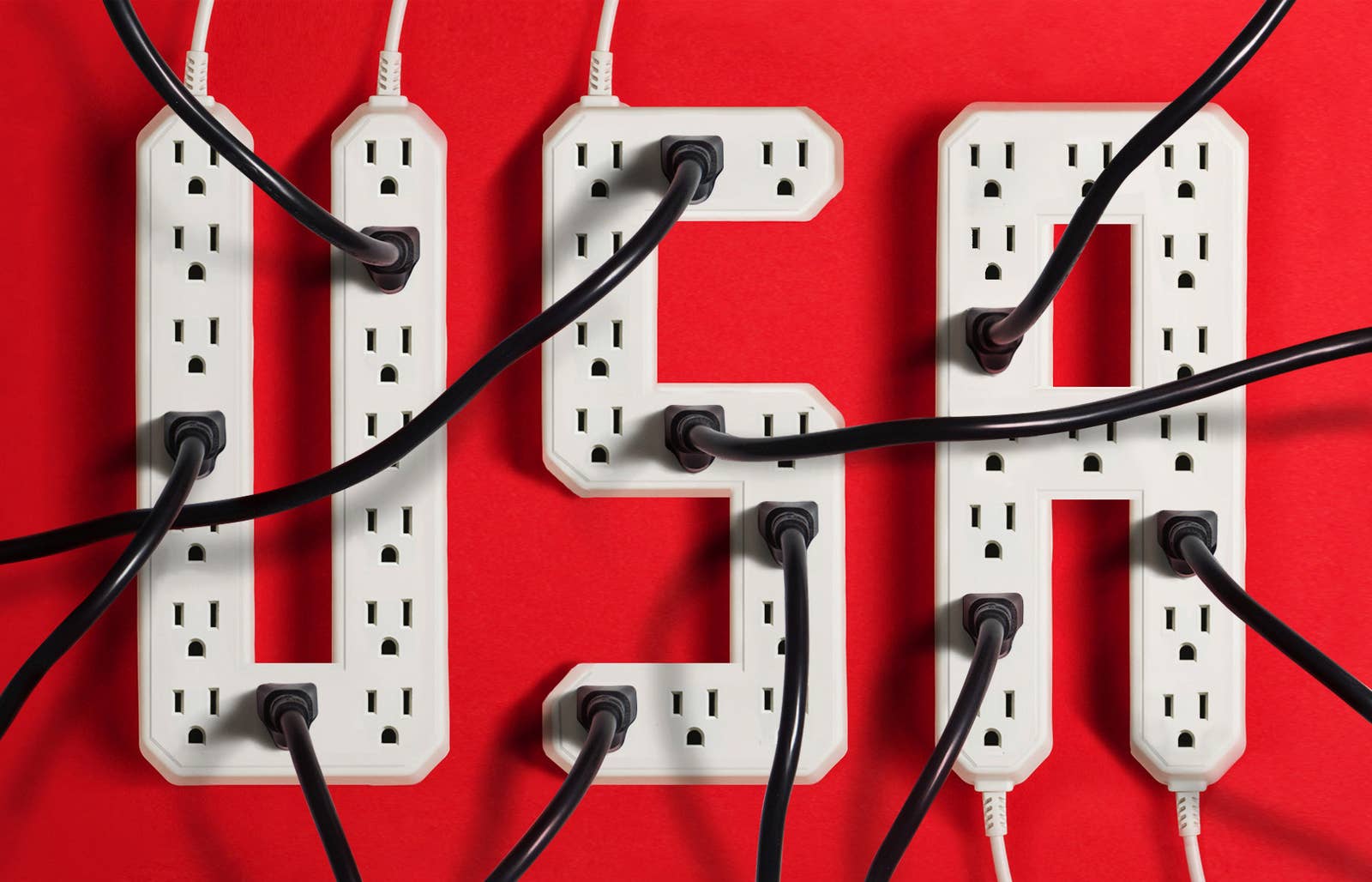
When the Chinese government banned all crypto mining in summer last year, the crypto mining company BitFuFu packed its 80,000 high-powered computers into containers and trucked them across the border to Kazakhstan, where electricity was cheap and regulations lax. Then, months later, when persistent electricity shortages in Kazakhstan forced the company to slow its operations, BitFuFu abandoned these rigs and shipped shiny new equipment directly to the United States, where it is now setting up shop.
BitFuFu is far from the only crypto mining company that’s picked up and moved its servers to wherever cheap electricity is to be had, a trend that’s existed nearly as long as bitcoin has. But China’s ban in 2021 forced a mass exodus of miners, many of whom have recently found their way to the United States, drawn by the safety of political and economic stability combined with the flow of cheap capital and abundant electricity.
Prior to the ban, China accounted for almost half of all bitcoin mining in the world, and the US accounted for only about 16%. But by October 2021, the US’s share had risen to 35% — a figure that has likely grown since then. This surge in mining on American soil has been accompanied by a flurry of dealmaking as investors, anxious of missing the crypto gold rush, have poured money into mining companies as a proxy for investing in bitcoin itself.
This January, as its new US operations came online, BitFuFu announced it would soon be listing on the NASDAQ in a deal that valued the company at $1.5 billion. And it’s not alone: 2021 saw a series of eye-popping IPOs and fundraising rounds as the price of bitcoin hit a record high of $69,000, with more deals scheduled for later this year.
Bitcoin’s protocol is programmed to make mining progressively harder by ramping up the difficulty of the mathematical puzzles miners compete to solve — which means more machines, more computing power, more electricity, and more money to mine the same amount of bitcoin. Mining rigs of the sort BitFuFu shipped cost between $10,000 and $13,000 each and have an expected life span of only about three years. Most mining operations link together tens of thousands such machines. Given these costs, it isn’t surprising that miners and their institutional backers are leery of sinking money in countries where the national government could simply ban mining, as China did, or the local electricity grids could be overwhelmed — as Kazakhstan’s were. Russia emerged as another hot spot last year, but seasoned miners say the country suffers from the same political risk and arbitrary policymaking as China.
“I could have [gone] to Russia and been bitcoin mining at a cheaper cost than I am now, but I also have, you know, $100 million of assets,” said Sheldon Bennett, the CEO of bitcoin mining company DMG Blockchain, which he set up in Canada after years of working in Russia and Eastern Europe for a big four accounting firm. “Putin will do what he wants to do and he doesn’t care if he has to stomp on a few people to get it done.”
“Bitcoin mining is one of the most mobile industries, possibly in history.”
As large-scale miners move to the US, the country is becoming home to an unusually portable industry. “Bitcoin mining is one of the most mobile industries, possibly in history,” said Karim Helmy, a researcher at Galaxy Digital, a crypto wealth management and mining company. “All you need is a mining rig, power supply units, and a container to put them in.”
But this mobility carries risks for the communities where crypto miners are setting up shop. In Kazakhstan, miners simply plugged into the existing infrastructure and migrated at the first sign of trouble. In the US, crypto miners want to be taken seriously as a legitimate industry putting down long-term roots. Electricity executives proffer a set of interlinked concerns: Can their grids support this influx of miners? And if not, who should pay to upgrade the grids, and who will be left holding the can if the miners decamp to another more lucrative destination?
“Crypto miners were in China and then leaving China and going to Kazakhstan, and now they’re going to come to Texas,” said Steve Wright, a former electricity executive from Washington State, who testified at the House Committee on Energy and Commerce’s first-ever hearing on the carbon footprint of cryptocurrencies in January. “It’s a completely different business relationship than anything in the 100-plus years that the electric utility industry has been operating.”

In 2017, Bitcoin went through its first big bull run, rising from $1,000 to $20,000 over the course of the year. Didar Bekbauov saw an opportunity: He and his partners bought 50 mining rigs and took advantage of his native Kazakhstan’s low electricity prices to mine for bitcoin. As his mining company, called Xive, scaled up, Bekbauov began inviting investors to Kazakhstan, where Xive could run their operations for them. With bitcoin-mining operations exploding, the government passed a law in 2020 that officially recognized cryptocurrencies as property assets and legalized mining operations — a law that would help make the country even more of a destination for miners.
At the time, the biggest mining operations were based in China, where they ran on cheap electricity from coal-fired power plants. China’s government initially tolerated the miners, but soon grew increasingly hostile before banning mining outright in May 2021. The environmental cost was certainly a factor, but Chinese officials also said cryptocurrencies posed a risk to the country’s financial stability and encouraged crime. China banned all trading in cryptocurrencies soon after the mining ban, in effect making it illegal to exchange bitcoin for Chinese currency.
Once the ban took effect, Kazakhstan became a natural destination for China’s crypto mining sector. But miners like Bekbauov who were already based there suffered from the influx, which put a strain on the country’s grid.
It isn’t as if crypto mining used up all the electricity in Kazakhstan. Rather, mining clusters can load the network in a region, creating localized shortages and requiring expensive upgrades or maintenance — much like connecting too many devices to a single plug in your house can blow a fuse.
“After the Chinese ban happened, a lot of Chinese miners came and they utilized all the spare electricity, they overloaded the grid and provoked the energy crisis in the country,” Bekbauov said. “So now, no electricity left for mining.”
“In Kazakhstan, the miners came and the whole country suffered from an electricity shortage.”
The Kazakh government began rationing electricity for crypto mining operations as early as September 2021 — a mere three months after China banned mining activities. As the winter set in, Bekbauov said, the local electricity utility shut off power to crypto miners from 6 p.m. to 11 p.m. — a time of peak electricity demand for heating homes, meaning the machines are idle 20% of the time. In December, the government raised the price of fuel, prompting weeks of protest and political instability. Crypto backers say the protests cannot be linked directly to the surge in mining, but the violence has certainly spooked international crypto investors.
Bekbauov said Xive remains invested in Kazakhstan and is planning to build its own captive power plant — a common strategy used by major industries across Asia to ensure an uninterrupted supply of power. But for future expansions, he is considering the United States because of the capacity and stability of its energy market.
“In Kazakhstan, the miners came and the whole country suffered from an electricity shortage,” Bekbauov said “In the United States, they have huge capacity.”
With so many miners flocking to the United States, some policymakers are concerned that electricity grids in American crypto mining towns could suffer from the fate of places like Kazakhstan. The US generates more electricity than any other country in the world, save for China, but the power is divided between grids. That means a shortage in one state cannot easily be offset by a surplus in another. In Texas, which has attracted the most attention from crypto miners, the industry is expected to account for about 6% of the expected peak electricity demand. Yet, Texas is also the state where a miscalculation in peak demand last February resulted in the largest and longest blackout in the state’s history.
Policymakers are also concerned about how all the energy consumed by mining will affect greenhouse gas emissions. Environmental activists say that even if crypto mining relies on renewable energy, the industry will use green power that could have been put to other, more productive, uses.
Bitcoin boosters say crypto mining can actually solve these problems by creating a robust market for renewable energy — which in turn, by their reasoning, would create incentives for fresh investments into new renewable energy projects.
“If we want more solar and wind to be developed, we have to harness market incentives for developers. Bitcoin mining partnerships can help do that,” Brian Brooks, the CEO of mining company Bitfury, told the House panel in his testimony in January.
Electricity executives, on the other hand, are worried about flight risk. If a utility invests in a shiny new renewable project to serve a big user like a crypto mining company, there’s a chance that the company leaves in five years in search of a better deal elsewhere — and everyone else on the grid could be forced to foot the bill.
In Denton, Texas, for instance, the local electricity utility has signed a deal to provide 300 megawatts of electricity — equivalent to the energy demand of the entire town — to Core Scientific, one of North America’s biggest mining companies. The utility insists it has protected its other customers by requiring Core Scientific to pay for the costs of upgrading its network. But with the sheer size of the deal, the lack of sufficient public information, and memories of the blackouts of last winter still fresh, residents are concerned about how the arrival of a big new electricity-guzzling data center will affect them.
“The utilities are very, I think, attentive and concerned that if a cryptocurrency miner went away, they haven’t recovered cost, and that they’re going to have to pass along to all of the other residents of the city,” said Kathy Masterson, a senior director at Fitch, who analyzed the Denton deal.
“Their level of misunderstanding is very high about how things actually work.”
So far, electricity utilities are responding to crypto’s portability challenge by structuring their contracts in a way that protects their household consumers from price shocks if a crypto mining company were to suddenly depart. Most utilities are not building new generation capabilities and are asking companies to pay upfront for any grid upgrades to serve them.
The decadeslong migration of factories and manufacturing from the US to Asia has meant some electricity utilities already have preexisting generation capacities that can now be used to supply crypto mining companies.
Washington state, for instance, has become a magnet for crypto mining because it has lots of renewable hydroelectric power. The costs of building these massive projects has already been recouped over decades from giant power consumers like Alcoa, which ran an aluminum smelting plant before it was shuttered last year. That means selling the electricity to crypto mining companies does not pose that much of a risk.
Given enough time and money, crypto miners and electricity utilities could probably come to an arrangement that served both parties, Wright said. But he remained skeptical that crypto mining would trigger a boom in investments into renewable energy — largely because crypto bros are still grasping the complexities of the US’s electricity grids.
“Their level of misunderstanding is very high about how things actually work,” Wright said. “I would certainly be hesitant to make an investment in a large-scale, generation project — wind, solar, natural gas, coal — unless I was confident that the load was going to be there for a long time.” ●
